Blog, breeding, genetics, ulluco (Ullucus tuberosus)
Ulluco: Color Genetics – A Familiar Beet
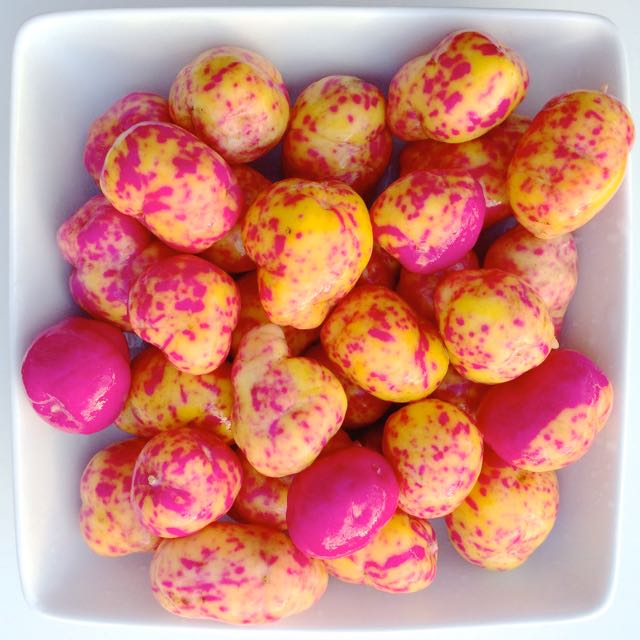
A quick review for those who have not been following our ulluco work: Ulluco is a crop that very rarely sets seed. In fact, there are only two published reports of ulluco seed production: here and at the University of Turku in the early 1990s. There is perhaps one published report of seed being found on ulluco plants in the Andes. To the best of my knowledge, there is nobody else in the world doing sexual breeding with ulluco, although there is a vegetative mutation breeding program in New Zealand. Because so few people are working on the crop, there is very little information available to guide our breeding work and no information at all about ulluco genetics. That’s not much of an impediment since I’m not really doing highly technical breeding here, but it is always helpful to know more about the genetics underlying traits of interest.
I have been trying to make some guesses about ulluco genetics, particularly for skin and flesh color. This is not easy, although it has one big advantage over most of the other Andean tuber crops in that it is diploid. The usual approach would be to make test crosses between varieties in sufficient number to get reliable ratios of phenotypes in the progeny and then to work backwards to determine the likely genotypes. Unfortunately, it is nearly impossible to make high-confidence controlled crosses with ulluco because the flowers are very small and delicate and less than 1 in 400 attempted crosses produce seed. Also, only about 4% of seeds ever germinate, so producing the kinds of test cross progeny required is impossible at our scale. Even if I spent all of my time making ulluco crosses, I wouldn’t be able to produce enough.
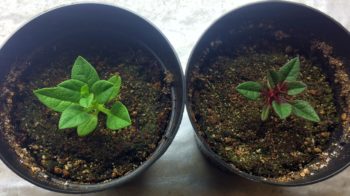
So, we work with what we have. I have been able to collect tuber color data for 72 seedling varieties with known female parentage. The most interesting puzzle is that I have gotten a large number of white varieties when no white varieties existed in the parent pool. Rather than starting from scratch, I decided to look at what is known about the color genetics of ulluco relatives. There is almost nothing known about its closest relatives, but beet isn’t too distant (both are members of the order Caryophyllales) and we know a fair amount about it. Beet also produces similar pigments to ulluco (betalains) and so it isn’t unreasonable to guess that the genetics controlling the biochemical pathways that produce these pigments might be similar. This is a model for red, yellow, and white color inheritance in beets:
| Phenotype | Genotype |
| Red | R*Y* |
| Yellow | rrY* |
| White | **yy |
Red and yellow are dominant traits and white is recessive. Red is epistatic over yellow and white over both red and yellow. In addition, beet has a gene Bl (blotchy) that, when present in homozygous recessive configuration (blbl), produces irregular coloration. This is the simplest color model for beets; there are more complicated systems that posit multiallelic loci. I am intentionally ignoring those for now, because I have so little data to work with. Simpler is better.
This looks like a pretty good fit. I was particularly struck by the blotchy gene. One characteristic ulluco trait is the red/purple spotting on some varieties. It turns out that blotchy in beets produces the same sort of thing, although in beets it also affects the flesh, not just the skin.
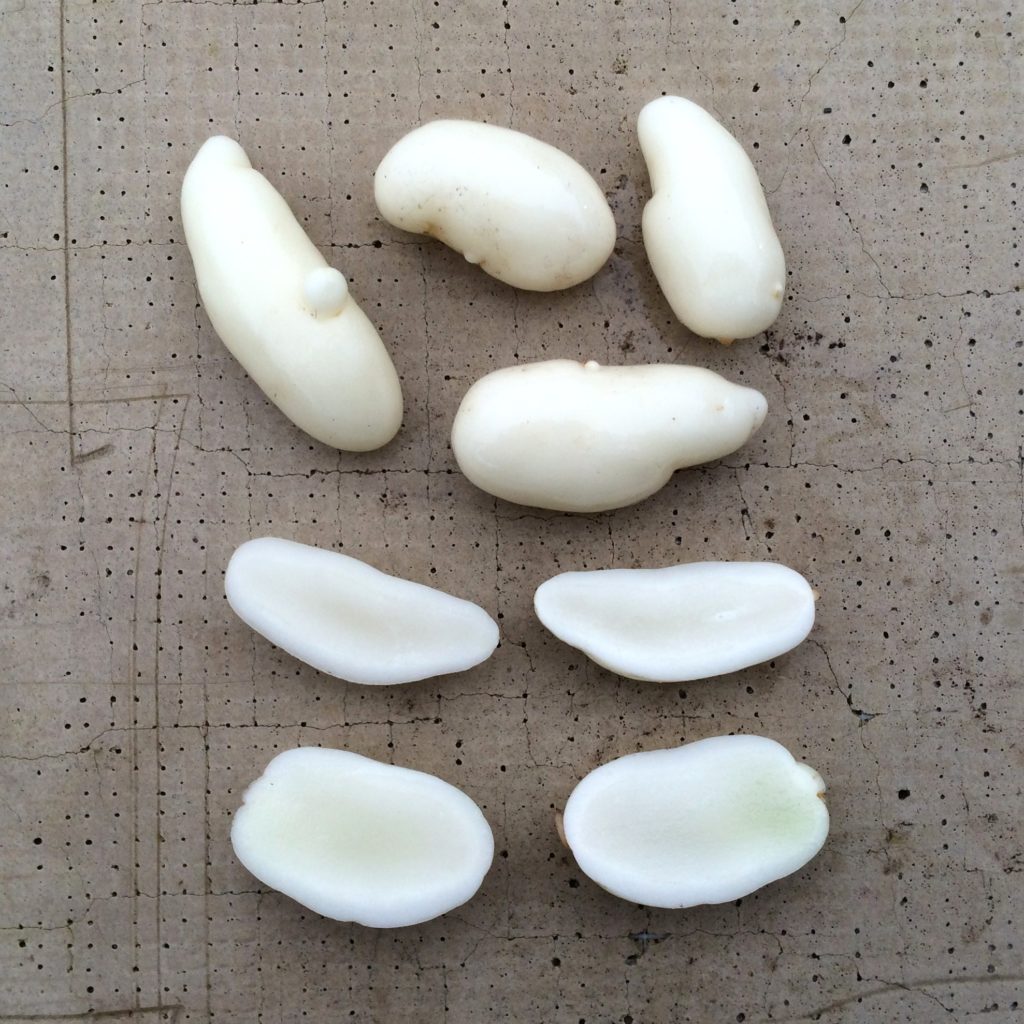
So, at first glance, this looks like a reasonably good match for ulluco, but can it account for the development of white ullucos from colored varieties?
Let’s do some Punnett squares!
First, let’s take the simpler case of yellow ullucos. Since, according to the beet system, these would have to be homozygous recessive for R, we only have to look at Y. A cross between two heterozygous yellow varieties will be Yy x Yy:
| Y | y | |
| Y | YY | Yy |
| y | Yy | yy |
Assuming that we have yellow varieties that are heterozygous for y, then we will get a 3:1 segregation between yellow and white phenotypes, 25% white progeny.
Next, let’s do a red x red cross, assuming that both red and the underlying yellow are heterozygous. This one is a little more complicated. This is a two-factor, dihybrid cross of RrYy x RrYy:
| RY | Ry | rY | ry | |
| RY | RRYY | RRYy | RrYY | RrYy |
| Ry | RRYy | RRyy | RrYy | Rryy |
| rY | RrYY | RrYy | rrYY | rrYy |
| ry | RrYy | Rryy | rrYy | rryy |
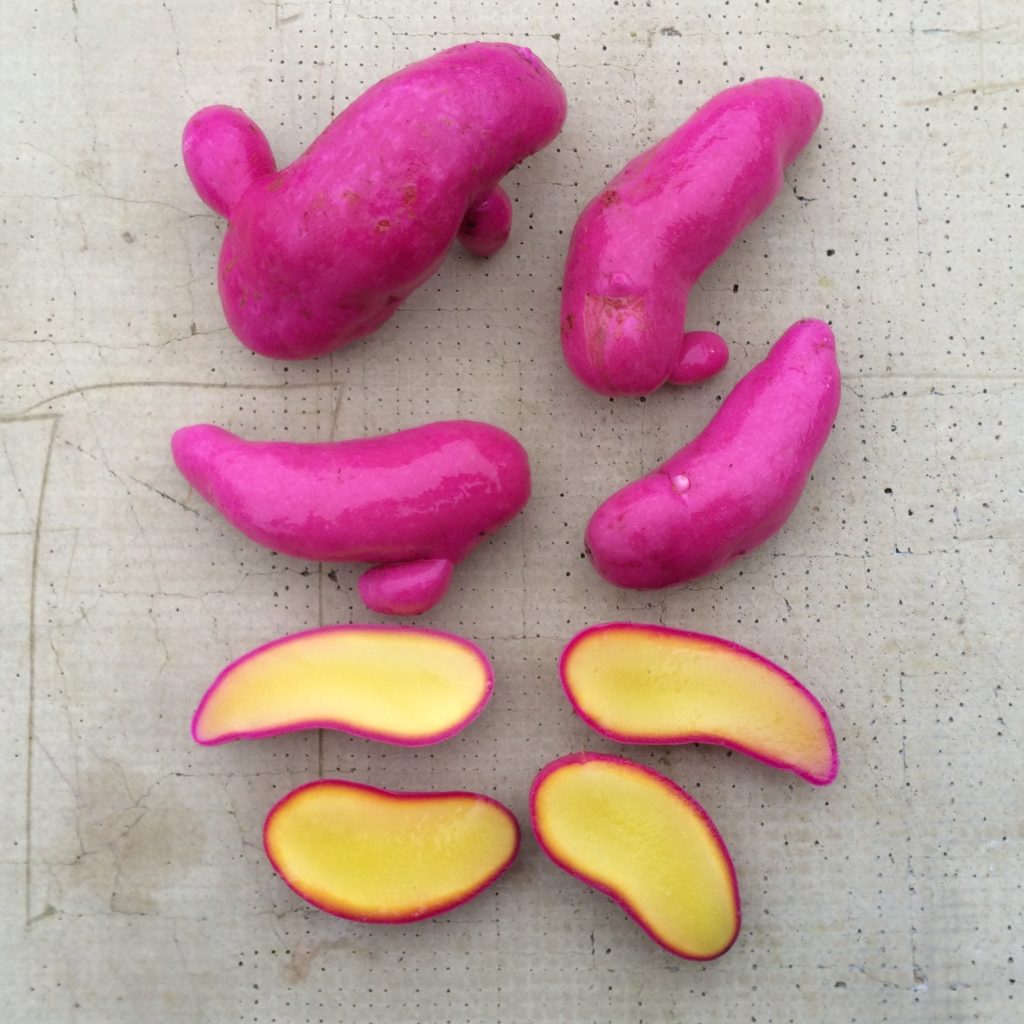
We get a phenotype ratio of 9:3:4 red:yellow:white from this cross, or 25% white.
I think you can probably guess how this will turn out, but let’s also do a red x yellow cross, again assuming that both factors are heterozygous. This is a cross of RrYy x rrYy:
| RY | Ry | rY | ry | |
| rY | RrYY | RrYy | rrYY | rrYy |
| ry | RrYy | Rryy | rrYy | rryy |
| rY | RrYY | RrYy | rrYY | rrYy |
| ry | RrYy | Rryy | rrYy | rryy |
We get a phenotype ratio of 6:6:4 red:yellow:white from this cross, 25% white again.
Great! The beet system easily accounts for the production of white progeny from colored parents. We can’t declare this a true fit without a lot more work, but this is just a sanity test to see if our results look remotely close. So, here are the parent and progeny phenotypes for all the seedlings that have survived long enough to form tubers:
| Parent Background Color | Total Progeny | Yellow Progeny | Red/Purple Progeny | Orange Progeny | White Progeny |
| Yellow | 37 | 28 (75.7%) | 0 (0%) | 1 (2.7%) | 8 (21.6%) |
| Red/Purple | 23 | 3 (13.0%) | 17 (73.9%) | 0 (0%) | 3 (13.0%) |
| Orange | 8 | 5 (62.5%) | 0 (0%) | 3 (37.5%) | 0 (0%) |
| White | 4 | 0 (0%) | 0 (0%) | 0 (0%) | 4 (100%) |
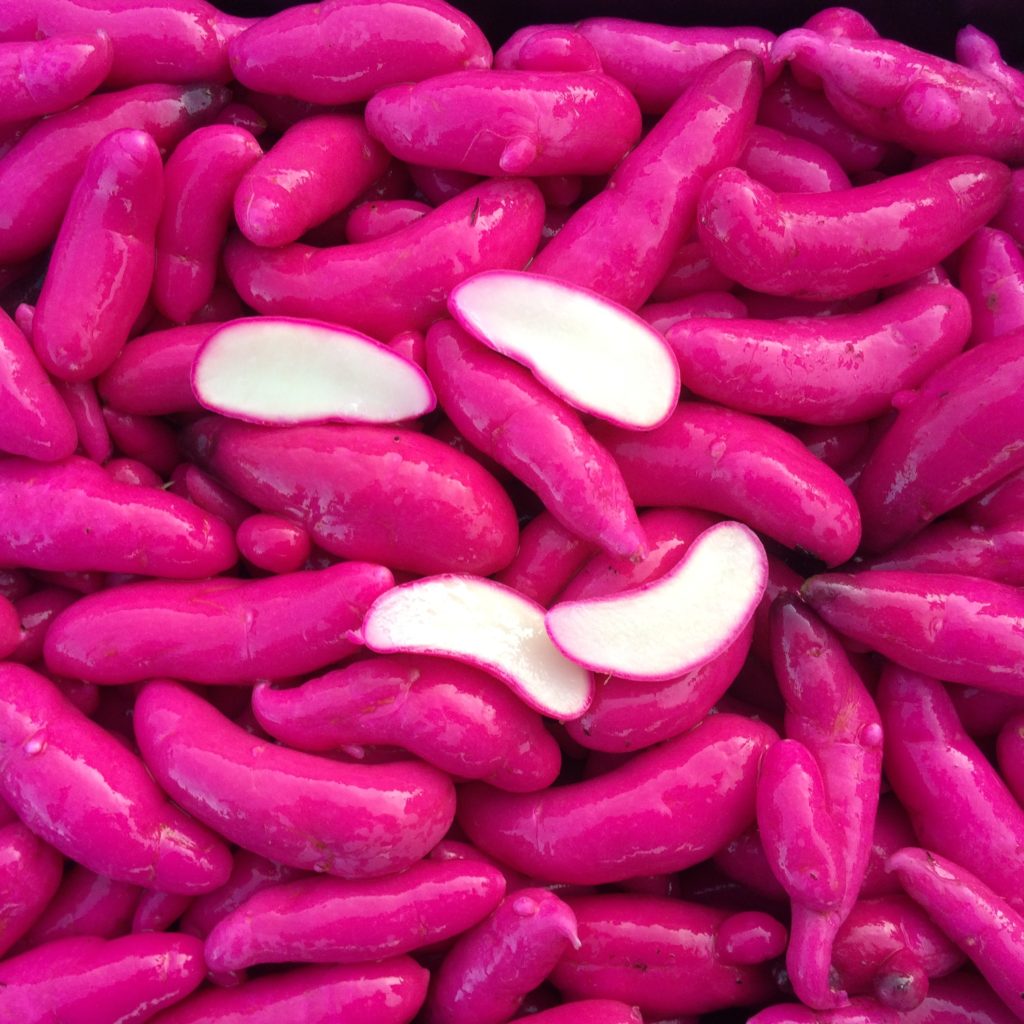
From yellow parents, we have 21.6% white progeny. From red parents, 13%. We should probably ignore orange because the number of progeny is just too small.
It is dangerous to read too much into such small sample sizes, but these numbers look reasonable to me. I don’t know if the varieties that we started with are homozygous or heterozygous for R and Y. Assuming that we have some of each, then the percentage of white progeny would be less than 25%. The percentage of white progeny from yellow parents suggests that most of our yellows are heterozygous for Y and the percentage of red progeny from red parents suggests that most of our reds are homozygous for R.
If I assume that the beet system is substantially correct for ulluco, which I am now inclined to do, it suggests that I should group varieties in the field by phenotype in most cases, since I want to maintain populations of all colors. Or, at minimum, I should isolate the white varieties from the colored varieties. I don’t know how much insect pollination we get in ulluco. I think very little, but avoiding white contamination seems like a good idea. I don’t want predominantly white ullucos and crossing any white variety to any red or yellow variety that is heterozygous for Y is going to come out 50/50 white to colored. In addition, every variety that doesn’t come out white will be heterozygous for Y, so in the next generation of crosses with white, they will all be 50/50 white to colored. In just a few generations of open pollination, white would overwhelm colored progeny. I’ll bet that the wild progenitor of ulluco had mostly white tubers.
The greatest value of this discovery, if it continues to prove out, will be in having the ability to identify the color genotypes of ulluco varieties. Yellow varieties have to be homozygous recessive for red, so, if we cross a rrYY yellow to a red variety, there are only two possible outcomes: 100% red indicates that the tested variety is RR and 50% red indicates that it is Rr. White varieties have to be homozygous recessive for yellow, so in any cross to a yellow variety, we have the same outcomes: 100% yellow is YY and 50% white is Yy. We also might want to know the yellow genotype of red ullucos. Even though yellow is masked by red, the yellow can reemerge in crosses. For this cross, we want a variety that is RRyy. There are two possible outcomes when crossing to a red variety: 100% red indicates YY and 50% white indicates Yy. This sounds great in theory, but it is so difficult to get ulluco crosses to take that it will be a challenge to get a statistically useful number of crosses. Still, over time it will probably be possible to puzzle out many of them.
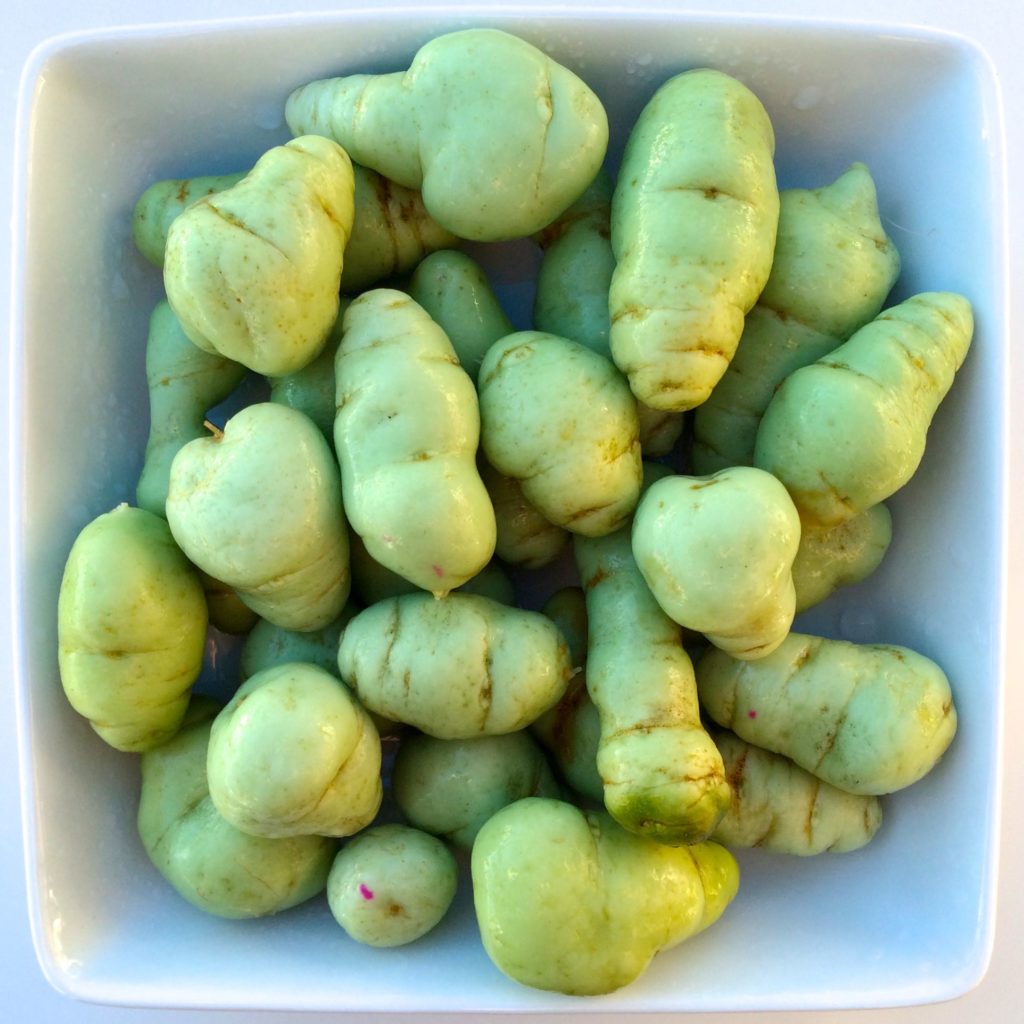
This also might shed a little light on one of the big questions with ulluco: has there been ongoing seed production and incorporation of volunteer varieties into the ulluco crop in the Andes? Seed has rarely, if ever, been observed in the field. In the CIP and PROINPA collections, there is not a single white ulluco. In fact, the descriptors for ulluco, presumably produced by people who have seen just about every variation that ulluco has to offer, don’t even include an option for white skin. Maybe nobody has seen a white ulluco before in modern times. Andean ulluco varieties might all be very old. If volunteers had appeared and been incorporated into the crop with any regularity, there would probably be a large number of white varieties. Of course, it could also be true that white is an unpopular color and that white varieties are culled whenever they appear.
The beet scheme doesn’t account for every color found in ulluco tubers. Ulluco has the additional colors orange and green. I don’t think that orange is seen in beets, but it isn’t a huge leap to assume some sort of combined expression of red and yellow pigments to produce orange ullucos. Green is another matter. It isn’t a very common color in tuber crops. There has been a little study of betalain inheritance in the cactus fruits of another related genus, Optunia. Cactus fruits have roughly the same colors as ulluco, including white and green. In Optunia, the white and green fruited varieties appear to produce no betalains. In crosses between green and purple or red varieties, at least twice as many red or purple progeny were obtained compared to green. There is no good way to relate this to the possibilities with ulluco, since Optunias are octaploid. It is possible that the green color in this species in unrelated. Optunia fruits grow above ground and so can be expected to form chlorophyll, which would be exposed in the absence of other pigments. Tubers would not be expected to form chlorophyll unless exposed to sunlight. The only immediately useful insight here is that there might be a master gene controlling betalain synthesis. If that is true, it might allow for a different way to form white ullucos, in which case inheritance will not match the beet system described above.
Flesh color also does not match with beets, as skin color does, so there must at least be additional factors involved in ulluco flesh color. Many ulluco varieties have colored skin and white flesh, a combination that I don’t think exists in beets. (Are there white fodder or sugar beets with colored skin? If you know the answer, please leave a comment.) Many beets have red flesh, but I don’t think that there are any ullucos with red flesh. The only ulluco flesh colors that I have seen are white, yellow, orange, and possibly green.
It will take a lot more work to confirm this: more varieties and particularly more controlled crosses, but I am happy with it as a working hypothesis and a first stab at puzzling out ulluco genetics.

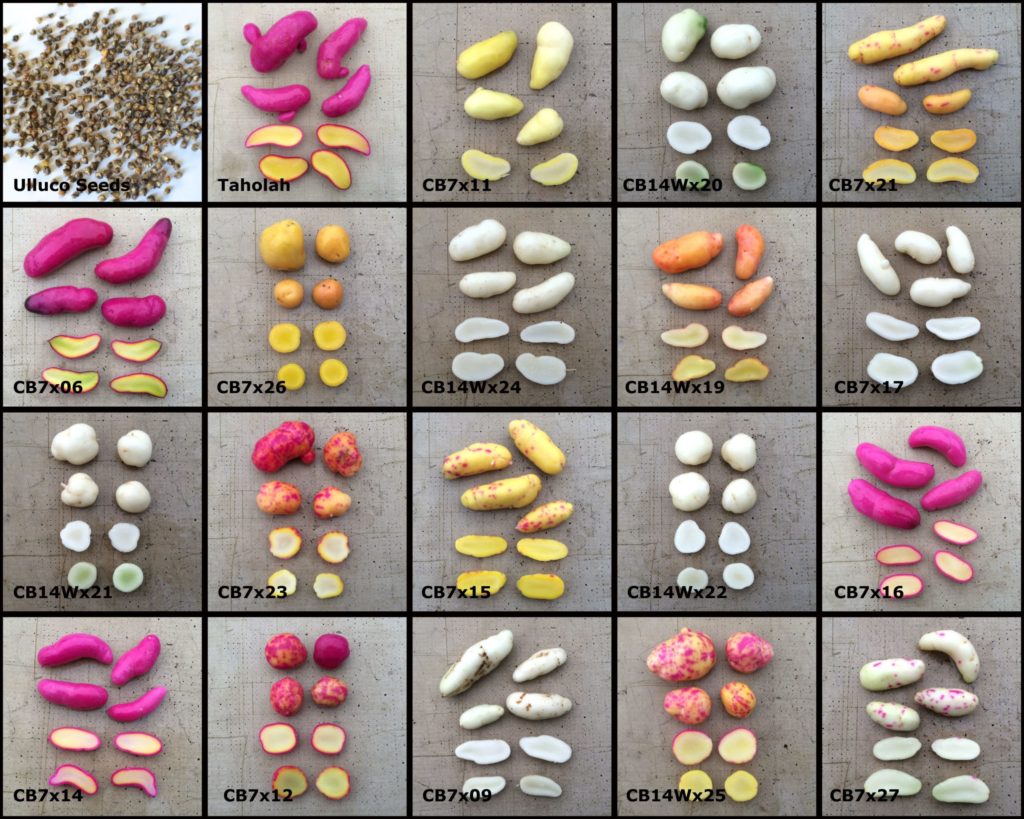
Yellow mangels tend to have white flesh and yellow skins. Seeds of change used to carry the seed. It looks like Baker Creek has them now I like them because they don’t taste as “earthy” as most cultivated beets.
Thanks Ceri. That’s good to know. I found some orange skinned beets as well, so it appears that most of the ulluco color combinations are found in beets, even if they aren’t very common.
dear Bill,
i am a fodder beet breeder in France. and was quite interested by your homology with Ulluco. we have in fodder beet red skin with white flesh as well as red flesh depeding on the varieties. Same with the yellow ones. we have also pink and orange roots in other varieties. we are working for the time beeing on the pathway and genetics of all those. not clear at all.
if you have any bibliography on the subject, i will be very interested.
cheers
KArine
Hi Henry. I am far from an expert on beet genetics, but I know someone who is. The information that I summarized in this post came primarily from papers by Irwin Goldman at the University of Wisconsin Madison. You should be able to search for his papers. He is also an active breeder and board member of the Open Source Seed Initiative, so I imagine he would probably be happy to help if you contact him.
The absence of white in traditional ulluco is fascinating. Does this imply that the original propagator of every single heirloom variety chose a non-white variety out of a field that included white?
Is there something undesirable about white ulluco, like it tastes bad or grows poorly? So undesirable that not one white variety made it?
It would be interesting to know if there are any traditional beliefs that still remember the possibility of white ulluco.
Is it known whether the pigment of green ulluco is a chlorophyll? You could see if it shows chlorophyll fluorescence. (I don’t even know what else it would be, but that doesn’t mean much.)